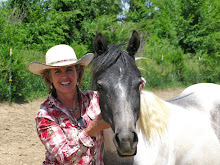
It’s been three years since I last visited the wild mustang herd of the Sandwash Basin in northwestern Colorado. I had the good fortune of taking two photographers, Marianne Martin of Boulder (www.reallifeportraits.com) , and Alex Kendall of Breckenridge (www.alexkendallphotography.com), out on the Sandwash Herd Management Area to photograph the mustangs.
ALL OF THE PHOTOGRAPHS ON THIS BLOG POST WERE TAKEN BY MARIANNE MARTIN. THANK-YOU FOR ALLOWING ME TO SHARE YOUR TALENT ON MY BLOG, MARIANNE!!!


All in all, the mustangs were very calm and comfortable with our presence. They were just doing what mustangs do.

Stallions were posturing.

And rearing up to establish dominance.




Some horses played.
He’s a looker.

These horse are grooming each other, a form of affection and care. They scratch places on their partner where they couldn’t reach themselves. Notice the leg stripes and dorsal stripe on the horse on the right. These are markings from the past when horses needed camouflaged coat.

The beauty of their movement sometimes feels choreographed.


Their coloring is fantastic.

This finely boned mare has ringlets in her mane.

Here she is with her foal.

Prairie dred locks.

There is an inherent value in these mustangs that live in 10 states across the Western United States.

Their beauty heals us.

I encourage you to learn more and get involved in supporting wise management and protection of our wild mustangs so that they will continue to thrive.
Ashe!
Deborah Stringfellow












0 comments:
Post a Comment